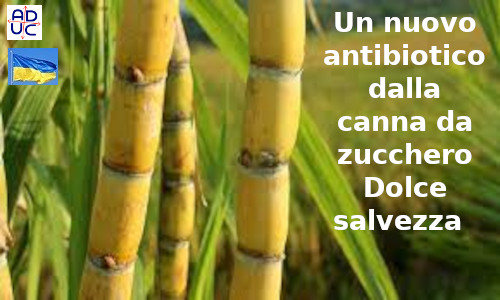Under his principality began the large-scale cultivation of sugar cane, a plant native to India and the Far East. Spread first in some Portuguese islands (Madera, São Tomé), then in Brazil and in the Caribbean islands, today sugar cane (Saccharum officinarum) is cultivated in almost all the countries of Asia and America, in Africa and in Australia and – together with sugar beets – represents the totality of sugar production.
Researchers from the John Innes Center (GB), in collaboration with colleagues from the Technische Universität of Berlin and the Jagiellonian University, (Poland), have discovered that a bacterium infesting sugar cane produces a substance effective against some pathogenic microorganisms for the have become resistant to antibiotic treatment.
Xanthomonas albilineans, is a bacterium that causes “scalded leaf” disease in sugar cane. It produces a toxin, albicidin, which is harmful to the plant but which has proved to be one of the strongest antibiotics in recent decades. It is highly effective in killing bacteria, including Escherichia coli and Staphylococcus aureus. The mechanism by which these bacteria become resistant to the immune system and to antibiotics is astonishing and has been studied by researchers at the University of Newcastle (GB): in the presence of antibiotics these microbes shed their habit (the cell wall) becoming ” invisible” to drugs to put it back on once the action of the drugs has ceased.
To solve the problem, it was necessary to find an antibiotic that acted on the genetic heritage of the bacteria. Albicidin, the “sweet” antibiotic, interferes precisely with the mechanism of formation of microbial DNA. Using cryo-electron microscopy, the scientists were able to understand how it works: albicidin targets an enzyme present in bacteria called ‘gyrase’ which has the task of modeling bacterial DNA, first by cutting it and then stitching it back together. The antibiotic creeps between the two passages preventing the mending and thus causing the breakage of the DNA and the death of the bacterium.
“We believe this is one of the most exciting new antibiotics. It has extremely high efficacy in small concentrations and is very potent against pathogenic bacteria, even those resistant to widely used antibiotics,” said Dr Dmitry Ghilarov, head of the European group who worked on the project.
The next step will be to move from the experimental phase to the pharmaceutical production of the “sweet” antibiotic.
(Article published in the newspaper The reason of 14 February 2023)
the association does not receives and is against public funding (also 5 per thousand)
Its economic strength are inscriptions and contributions donated by those who deem it useful
DONATE NOW
